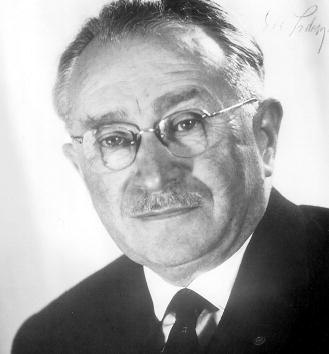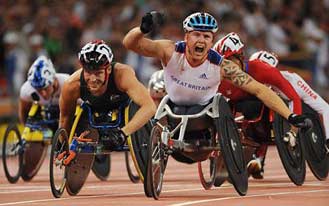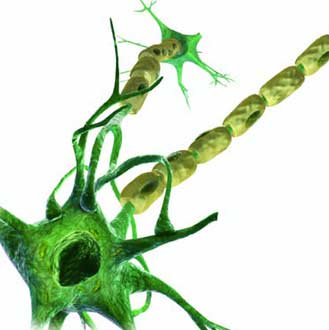Spinal Cord Injury Explained
Injury to the spinal cord can be caused by acute (sudden) or chronic (developing) trauma as well as medical conditions. Frequent causes of chronic compression injuries are herniated disks and primary or secondary tumors. Compromised blood perfusion, the delivery of nutritive arterial blood to capillary bed, as in anterior spinal cord syndrome can also be severely detrimental to spinal cord function. However the most damaging Spinal Cord Injury is one of acute trauma resulting in permanent paralysis.
SPINAL CORD INJURY CLASSIFICATION
Traumatic spinal cord injury have been classified into five categories by the American Spinal Injury Association and the International Spinal Cord Injury Classification System:
-
A – COMPLETE
Spinal cord injury where no motor or sensory function remains in the sacral segments S4-S5.
-
B – INCOMPLETE
Spinal cord injury sensory but not motor function remains below the neurological level and includes the sacral segments S4-S5. Typically a transient phase and if the person recovers any motor function below the neurological level, they’are considered motor incomplete and classified C or D.
-
C – INCOMPLETE
Spinal cord injury where motor function remains below the neurological level and more than half of key muscles below the neurological level have a muscle grade of less than 3, which indicates active movement with full range of motion against gravity.
-
D – INCOMPLETE
Spinal cord injury where motor function exists below the neurological level and at least half of the key muscles below the neurological level have a muscle grade of 3 or more.
-
E – NORMAL
Where motor and sensory scores are normal. It is possible to have spinal cord injury and neurological deficits with completely normal motor and sensory scores.
SOCIAL IMPACT OF ACUTE SPINAL CORD TRAUMA
The annual incidence rate of spinal cord injury varies from country to country, ranging from 15 to 71 per million (/m). In 2008 the incidence of spinal cord injury in the United Kingdom around 13 /m, Australia 14 /m, Canadi 35 /m, China 65 /m and the United States 35 /m per year. This suggests around 40 per million or 52,000 spinal injuries occur every year globally.
Of the 12,000 new cases of paraplegia and quadriplegia that occur in the United States each year 4,000 patients die before reaching hospital. Causes of acute spinal cord injury include motor vehicle accidents, work-related accidents, recreational accidents, falls and violence (shootings and stab wounds).
Paralysis occurs our times as often in males as females where about 60% of victims are under 30 years of age and 5% under 13 years of age (the pediatric age group). Falls from a height greater than their own is the largest cause of spinal trauma amongst the pediatric age group. A long-term outcome study of patients aged 25 to 34 who had suffered acute traumatic SCI before the pediatric age showed an employment rate of 54% while the employment rate in the general population for the same age group was 84%.
Limitation or complete loss of the capability to achieve economic independence following SCI combined with additional medical costs causes severe economic hardship for many living with paralysis and their immediate family. Further limitations to living a full social life are architectural barriers, buildings only accessible by stairs and a lack of ramps on sidewalks for example.
Increased awareness through education has played a key role in resolving these barriers and those created by negative or overprotective attitudes of healthy, non-injured people toward persons with spinal cord injury. When persons with spinal cord injury cannot fully participate society suffers. Not only are ethical standards, artistic and financial contributions to society lost, huge expenses for specialised lifelong care are incurred.
80% of SCI occur in people under the age of 30. The average life-time cost of thoracic paraplegia is $1.25 million and high level cervical quadriplegia such as those on ventilators $25 million USD. In 1990 the cost for acute and long term care of surviving spinal cord injury victims was estimated at $4 billion in the United States alone.
SPINAL CORD INJURY STATISTICS
Road traffic accidents 45%
- Motorcycle 20%
- Car, van, coach, truck 16%
- Bicycle 6%
- Pedestrian 2%
- Aircraft, helicopter 1%
Domestic and industrial accidents 34%
- Domestic: falls from stairs, trees, ladders, roofs etc. 22%
- Industrial: work falls from scaffolding, ladders, crush etc. 12%
Sporting injuries 15%
- General:?gymnastics, motocross, skiing, etc, 7%
- Diving into shallow water 4%
- Horse riding 3%
- Rugby 1%
Self harm and criminal assault 6%
- Self harm 5%
- Criminal assault 1%
THERAPEUTIC APPROACHES AND CHANGING ATTITUDES
The first known description of acute spinal cord trauma and resulting neurological deficits was in the Edwin Smith papyrus which is believed to be more than 3,500 years old. In this ancient Egyptian document Smith accurately described the clinical symptoms and traumatic effects of quadriplegia (tetraplegia) “an ailment not to be treated.” An indication of the feelings helplessness medical practitioners suffered at the time, a doctor’s value measured by the extent of cure achieved.
No strategies ensuring longterm survival for patients with spinal cord injury existed. A view which prevailed well into the early 1900’s. In the First World War the mortality rate for those with a spinal cord injury was 95%, mainly attributed to urinary sepsis and complications from pressure sores. Less than 1% survived for more than twenty years.
During World War II the number of casualties from spinal cord injuries both military and civilian increased dramatically in Europe. Specialized hospital units known as “peripheral nerve centers” developed between the wars in Germany and the United States demonstrating the advantages of concentrating special needs patients under specialized care. Great importance was placed on the unique opportunities offered by these specialized units. Gaining new insight in the natural course of the disease and further development of new therapeutic strategies.
Building on those experiences, specialized spinal cord injury units started opening throughout England in the 1940s. Mortality rates from a spinal cord injury were recorded at 35% in the 1960s. Today nearly every capital city operates an acute care spinal unit.
Dr. Ludwig Guttmann and his colleagues at the Spinal Cord Unit of Stoke Mandeville Hospital developed new treatment approaches including frequent repositioning of paralyzed patients to avoid developing bedsores, a potential source of sepsis and intermittent sterile catheterization to prevent urinary sepsis. The success in patient survival was dramatic enough to require development of completely new strategies for social reintegration of patients with spinal cord injury. Adapted workplaces and wheelchair accessible housing championed in the 1940s and 1950s by the English Red Cross has today become an integral component in the framework of social politics in most industrialized countries. Respiratory complications are now the leading cause of death in patients admitted with SCI. Secondary are heart disease, septicemia (blood poisoning), pulmonary emboli (blood clot in lungs), suicide, and unintentional injuries.
THE PARALYMPIC GAMES
Dr. Guttmann and his colleagues viewed physical rehabilitation as the basis of social reintegration both physically and psychologically. Supporting the idea of athletic competition in disciplines adequate and adapted to the physical capacity of their patients. Starting with two teams a competition in 1948 paralleling the Olympic Games in England, the idea of competitive sports for the paralyzed developed rapidly.
In 1960 the first Paralympic Games were held in Rome. The Paralympic games were held in the same year as the Olympic Games for the able-bodied using the same facilities, a tradition that has been followed ever since. The idea of competitive sports was extended to include people with a multitude of physical handicaps other than spinal cord injury emerging as the Paralympics we know today.
INITIATIVES AND PUBLIC AWARENESS
In many countries initiatives have risen at communal and national levels with the intent to decrease the incidence of spinal cord trauma and offer support and advice to both those with spinal cord injuries and their families. Many generously offer financial support for scientific and clinical research.
The prevention oriented “Think First” initiative, Canadian-based CORD and Wheels in Motion, the Christopher Reeve Paralysis Foundation, the U.K. Spinal Cord Trust, and the Paralyzed Veterans of America all maintain informative web sites with valuable information on the subject of spinal cord injury.
Although the overall incidence of SCI has not noticeably decreased the severity of injuries has deceased overall. Fewer now suffer complete injuries and survival rates have increased. This is mostly attributed to improvements in prehospital care including widespread instruction of first aid principles as well as the introduction of spinal cord immobilization and administration of advanced medicines during rescue and transport. Increased public awareness of risk factors leading to head trauma and spinal cord injury, the introduction of mandatory use of safety belts and installation of air bags in modern vehicles has also served to decrease trauma severity.
SPINAL CORD INJURY CURE AND TECHNOLOGICAL RESEARCH
Until recently research suggested once spinal cord trauma had occurred nothing could be done to alter the natural course of developing pathology, that damage to the central nervous system was permanent and repair impossible. At the beginning of the twenty-first century this belief came to change in the minds of scientists, clinicians, patients and their families. Research laboratories around the world adopted two new approaches:
1. Prevention of secondary injury and repair of manifest damage. The term secondary injury describes the observation that central nervous system structures that survived the primary mechanical trauma die at a later point in time due to deterioration of the milieu (nerve ending sheath) at the site of injury.
2. The amount and severity of secondary injury damage can be significantly larger than that of the primary injury. Researchers focused on identification of substances and therapeutic methods that help minimize secondary injury effects. In the field of cell biology, isolation and manipulation of specific cell types is being undertaken in effort to induce certain cell types, including stem cells and olfactory ensheathing cells to help repair damaged central nervous system structures.
Clinical research continues to improve outcomes for those with a spinal cord injury, such as stimulators for bladder control, orthopedic correctional procedures and physical mobilization. Integration of biomedical research like pattern generators, mechanics and kinetics of movement with the latest developments in computer science and engineering has given rise to neuronal networks. Neuroprostheses are being developed which enable paraplegics to move about and walk.
RESOURCES
- Gary L. Albrecht. 2006. Encyclopedia of Disability. University of Illinois, Chicago.
- Go, B. K., Michel J. DeVivo, and Scott J. Richards. 1995. The Epidemiology of Spinal Cord Injury. Clinical Outcomes from the Model Systems, edited by Samuel L. Stover, Joel DeLisa, and Gale G. Whiteneck. Gaithersburg, MD: Aspen.
- Sekhon, Lali H. S. and Michael G. Fehlings. 2001. Epidemiology, Demographics, and Pathophysiology of Acute Spinal Cord Injury.
- Stripling, Thomas E. 1990. The Cost of Economic Consequences of Traumatic Spinal Cord Injury. Paraplegia News.
- Vogel, Lawrence C., L. J. Klaas, John P. Lubicky, and C. J. Anderson. 1998. Long-term outcomes and life satisfaction of adults who had pediatric spinal cord injuries. Archives of Physical Medicine & Rehabilitation.
WEBSITES
- Christopher Reeve Paralysis Foundation, http://www.christopherreeve.org
- CORD – Canadaian Organization for Rare Disorders, http://www.raredisorders.ca
- Paralyzed Veterans of America, http://www.pva.org
- Rick Hansen Man in Motion Foundation, http://www.rickhansen.com




Hi Graham,
Your diagram of the spine is amazing – did you design it? Hey we would like to link to this article from our website if that is ok. Could you email me and let me know if ok.
Thanks a lot
Regards
Shirley
Spinal Cord Injuries Australia
Hello Shirley, yes I designed and created the interactive spine images and pretty much hold copyright over any content on this website. We allow, welcome and appreciate any links to our website thank-you. We monitor traffic from any incoming links and may accordingly recipricol link to consistent well ranked websites from our homepage. We have for sometime to the SCIA website you mention. I personally emailed requesting recipricol linking months ago to no response. It is about to fall off our list, it has been unreachable for long periods, as it is currently, returning a 404.
More to the image; I consulted a wonderful OT friend qualified in many diciplines re the listed affected areas. As you may know it’s generally the severity of spinal cord damage on any given level that eventually determines the area and extent of enduring paralysis (read into that lengthy debate). My model is I hope a generic balance. I may in time add a general-affected muscle group display option as brilliantly suggested by my OT. Thank-you very much for your kind words Shirley.
Hi Graham,
Cool thanks for that – we will link to your article/diagram from our site. Re linking reciprocity I noticed that you are already linking to our website but have got our name slightly wrong. We are Spinal Cord Injuries Australia and our web address is http://www.scia.org.au. There is a similar sounding organisation in Queensland – the Spinal Injuries Association. Their address is http://www.spinal.com.au. Hey anyway as well as adding your diagram to our site we will add you to our set of links…..
thanks again Graham
Shirley
Thank-you for pointing that out Shirley. I have corrected the link title. I actually use the Spinal Injuries Association as my care service provider (since back when they were ParaQuad) and have been involved in many of their initiatives, promotions and events. I’ll be poster boy for them again next month but cannot give details out on that just yet.
Thank-you for linking Shirley. I can reach your website today. I don’t know if you are aware, while it displays fine in Firefox 3.6, it displays incorrectly in IE8. Here’s a screen shot. http://www.streetsie.com/SCIA.jpg
Hi Graham
Yes, our website does play up for people using IE8. You will be pleased to know that we are just about to launch our new website – will be happening in the next few weeks – and hopefully all those display issues will be fixed.
Shirley
Hi Graham,
I love your site and the interactive lesion-effect…
I would like to use it in a presentation. Should I cite the website and you….what do you require?
Thanks anyway,
Christine.
Hi Christine, could you please post or use the Email Admin form below to detail the scope of your project. Is it single or multiple use, personal, profit or non-profit, who do you work for and who is your audience etc.
Hey there,
I have a friend who has a C3 Spinal injury. I am just wondering if he will be able to walk again? If so, how can we help? He does physio therapy, his stretches every morning, his tilt table every second day so he is pretty much active every day. He has some sensations in his right side, stronger than that of his left. He is 20 and will be turning 21 in April. We are in Gisborne, New Zealand and I am looking for information regarding his accident. Any help will be greatly appreciated.
No one can say if he will walk again. I would need his full history and other information to even make an educated guess. Sounds like his injury is “incomplete.” Incompletes can regain movement and sensation for upto 5 years post accident, but most improvement happens in the first 2 yrs.
He doesn’t have a family history of Paralysis, it was a rugby accident. He broke his neck in 2 or 3 places. Thank you though for the look into it. Ive been keeping his hopes up talking about getting him moving again. Thank you so much. This was appreciated very much.
I was referring to his complete medical history. I am not suggesting you get it to me. I am saying there are so many factors involved with a spinal cord injury even knowing his complete medical medical history and accurate details of his accident etc, nobody can say he will or won’t walk again, nobody. Not even his doctors.
I sometimes get abused for suggesting you should not tell people they will walk again. But I have lived through this nightmare. I have been that guy in the hospital bed. And I can tell you there is a fine line between staying positive and false hope.
It used to annoy me when visitors would say, you’ll be right, you’re a strong guy, you will walk again. I’d smile thinking, well fuck me… I was in the presence of allmighty God all this time and didn’t know it! Go ahead, perform your miracles!
Being positive is great, but don’t place any expectations on him. If you keep saying you will move, you will move, and he doesn’t move, he may feel like a complete failure in your eyes. The one thing – if it’s true – I suggest you tell him is, I will always love you no matter what.
Okay NOTED thank you.. And will keep positive with him. Thank you heaps xoxo
Hi
I had a fall from 6 ft and because of being a osteoporosis
I had a c2 and t4 injury
Got numbness in right leg which now is only 2% left on the toes only
I can move all my limbs ( now the power are 5/5 in all the limbs
Plus my bladder and bowels movement is getting better
Earlier I was taking laxotive medicine and use to pass bowels every second day
Now without the medicine I started passing the motion
I walk n sit with the help of a brace for 10 mind each three times a day
I also broke my left collar bone with ribs on both sides
Just want to know if I will be able to lead a normal life
I’m 41 years old with thalassemia intermedia
I feel the fractures are getting healed and there is no pain on spine
I was advice for 3 months rest and no surgery
Have 50-60% of compression on t4 area
Need your true opinion
my l4 or l5 problem sir,i did surgery since before 2year but now some paining at that point sir,how can i reliefe their guide me sir.
The graphic representation provides clear understanding on specific spinal cord and the range of damage it could bring to the body. It could be devastating to experience SCI, the cost of medication is predictably going to be big. Thank you for sharing facts.